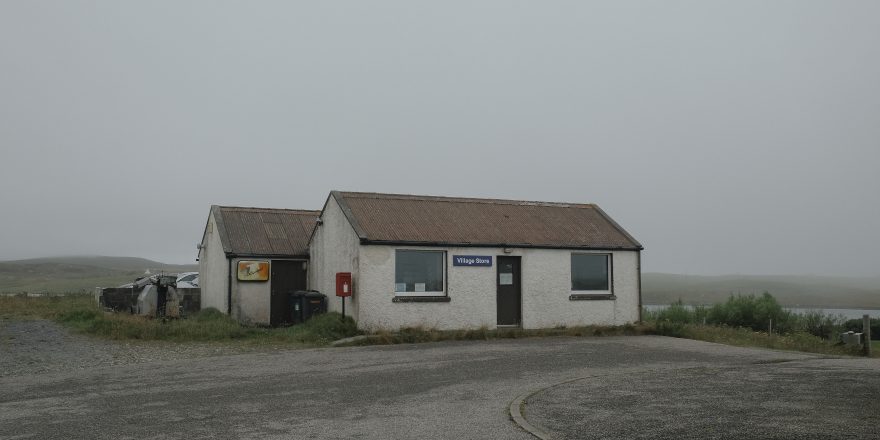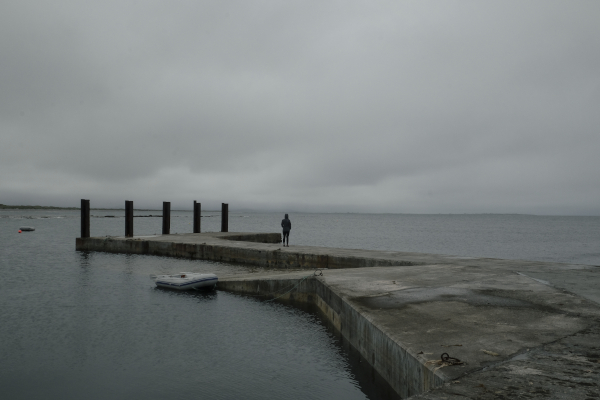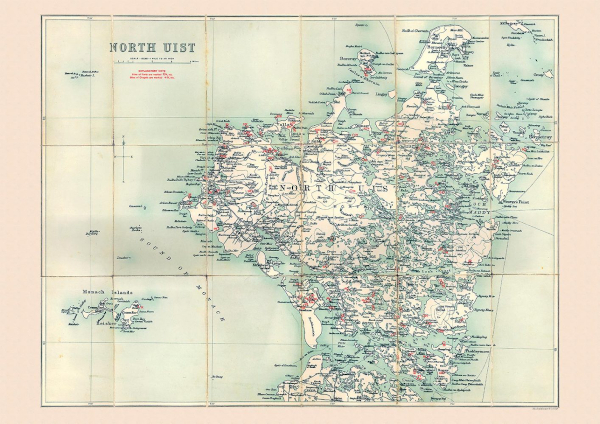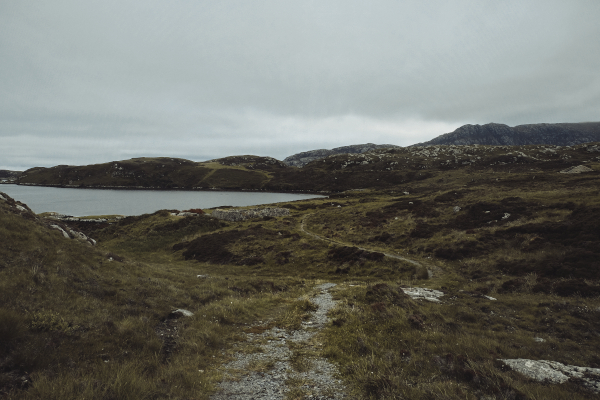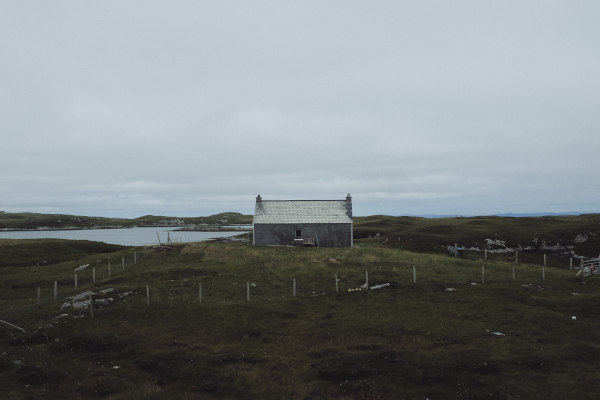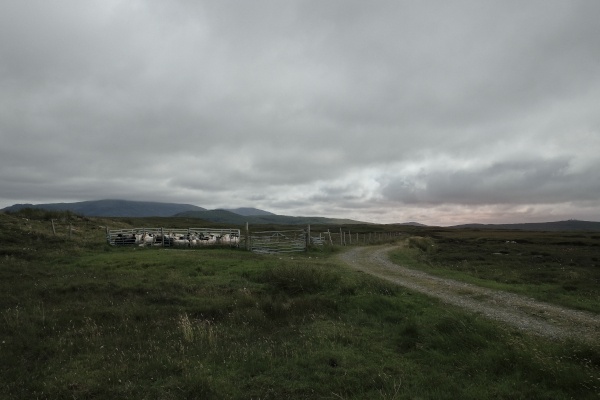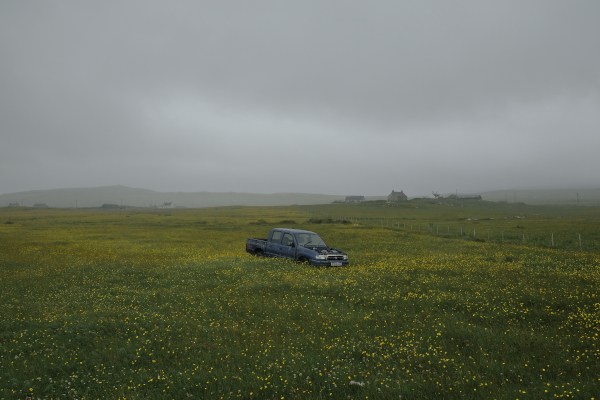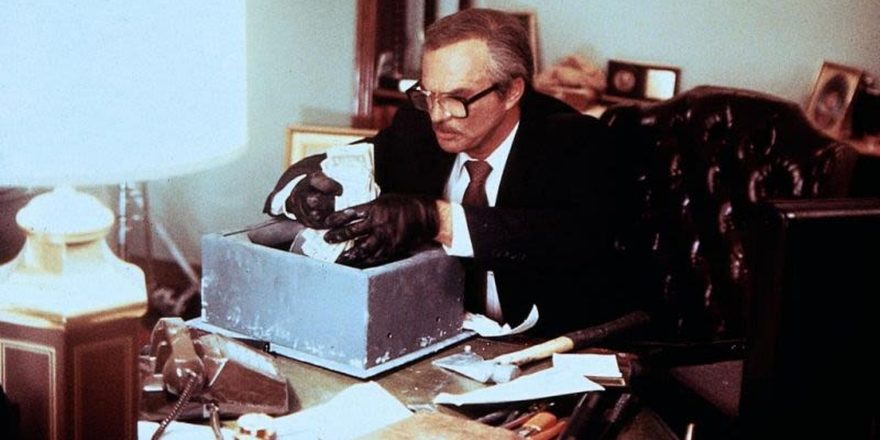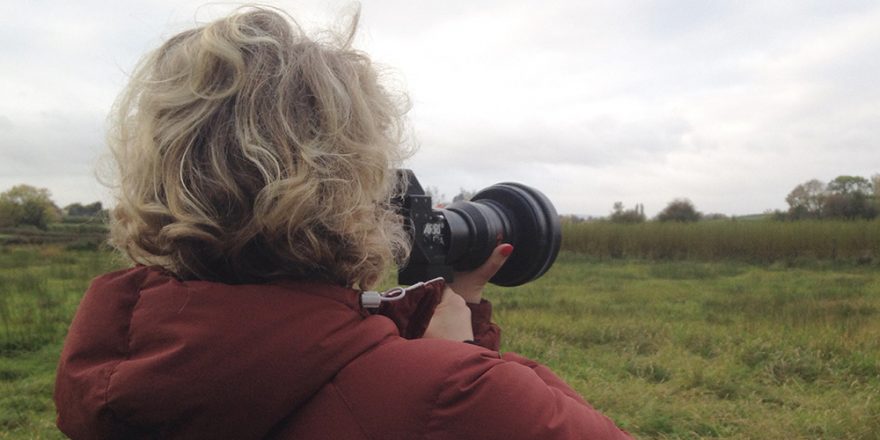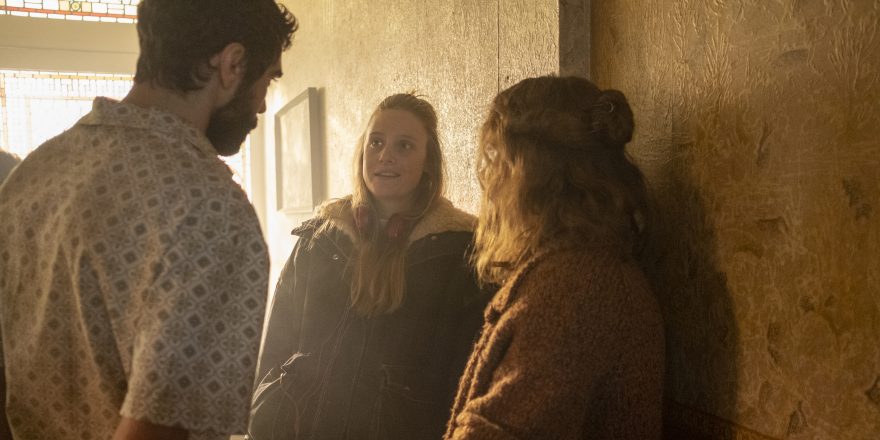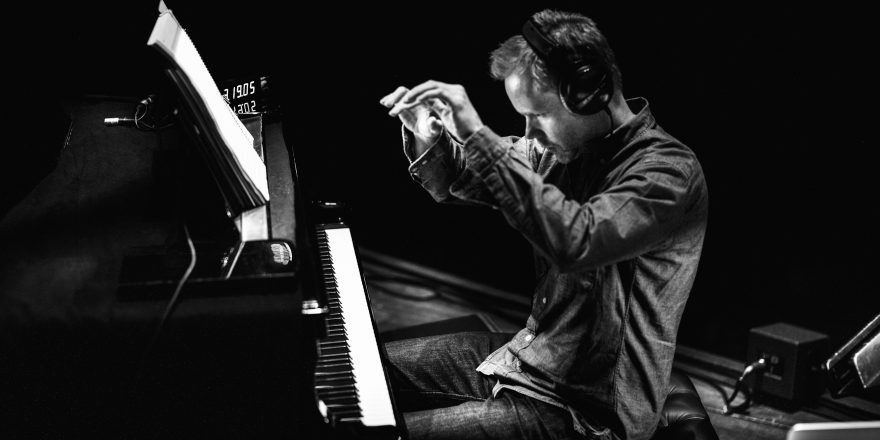I remember my hands shaking with nervous anticipation as I tried to slot the USB PowerPoint presentation containing my locations photos into the house laptop of a fancy top-floor boardroom at the Film4 headquarters in London. Usually a glutton for free nibbles, my nerves even made me resist the impressive spread of colorful cakes that had been put out for this decisive meeting. One in which the outcome would have a critical impact on both the creative vision and financial risk of my film Limbo – a story about a group of asylum seekers sent to a remote Scottish island to wait for their asylum claims to come through.
I had travelled with the producers to Skye, Kintyre and the North East coast of Scotland, around where Bill Forsyth’s Local Hero was made (a key inspiration for Limbo), but by this point I knew my film belonged to the Uists. A small chain of remote, wind-beaten-to-hell islands way off the West coast, somewhere in the Atlantic Ocean. But it wasn’t going to happen without convincing our financing partners that this film could not be made anywhere else.
Now, this all started because I was writing a screenplay set on a remote Scottish island and basically … I hadn’t really been to one before. Naturally, I looked on Google Maps for inspiration, and there it was – a fairly substantial chain of islands way out west that I hadn’t heard of called “Uist.” The following week, I jumped on a tiny, tartan-clad propeller plane alongside five other passengers. As we came in to land and I munched, open-mouthed, on a complementary Tunnock’s teacake while gazing out of the window, I knew that this was the right decision; the islands are unique as they are made up of a patchwork of lochs and pools that pock the landscape. It’s as though some kind of deity painted an idyllic vision of Scotland on canvas and then proceeded to repeatedly punch holes in it before throwing it away – off to the West. The Atlantic seems to eat its way into the land at every available convergence, battering the coastline, trying to greedily consume any and all dry territory. In fact, not long after arriving, one of the locals informed me that on a rough day, the pupils at the primary school would sit in the classroom and the waves would crash against the windows. Eventually, the council had to resituate the school because of the cost of repairing it – not to mention the risk of the pupils being forced to use their desks as boogie boards in the middle of Algebra. The danger of the ocean is all too present on the island. In 2005, the Uists were severely battered by a storm, causing mass destruction and the loss of life, when a family of five were tragically washed away trying to escape across a causeway on South Uist.
On arrival, I picked up my tiny rental car that was left for me at the airport, with the keys in the sun visor, like in a less-than-believable Hollywood movie. Perhaps the only use the sun visor gets on an island that’s permanently stuck under a cloud. I was ready to embark on my own experience of being a stranger, an outsider, marooned on this island. In my own country, yet far from my world in Edinburgh and even surrounded by a language that I didn’t understand – Gaelic. Something that I was accustomed to seeing on road signs but not hearing … spoken out loud by people that live day to day in this beautiful language.
I hunkered down in a small peat-fired cottage in the middle of nowhere, with no signal or wifi and a fridge full of chicken jalfrezi ready meals from the local store. I would write in the morning, gazing out of the window, thinking about the film’s protagonist, Omar, a young Syrian musician who struggles to come to terms with his circumstances as a refugee. I was mesmerized by the constantly changing weather, set against the backdrop of Beinn Mhòr – the highest mountain on South Uist. Then, in the afternoons, I would climb into my tiny rental and drive around the single-track roads, dodging sheep while looking for locations, taking photos and chatting to locals – often about the weather. And seaweed. In fact … I remember meeting the youngest-looking 90-year-old man I had ever seen. Jet black hair and not a single wrinkle across his generous, permanently engaged face. His eyes were the giveaway, strikingly vibrant yet brimming with wisdom harvested from a life well lived. On this occasion, I was regaled with stories from his time living back in Edinburgh. He proudly told me that his local “bobby” (policeman), who in those days was posted in a traditional Dr. Who-style “police box,” was none other than Sir Sean Connery.
There is no doubt about the beauty of the Uists, but this wasn’t what I was interested in. You can find that perfect, Scottish picture postcard imagery here if you want to. Dramatic landscapes, white sandy beaches and smiling seals, but I was looking for something different. I was looking for something that could represent purgatory, that could make you feel like you’re on the edge of the Earth. Still beautiful, but isolated and lost.
I was quickly struck by a palpable conflict between nature and human life. If I was going to convince the financiers that we had to make this film here, I needed my location photos to capture the essence of the complicated, conflicting relationship between this unique chain of islands and those who inhabit it. You can feel this from the way the salt in the air has eaten away at everything “human-made,” almost as if nature is trying to reclaim what once belonged to it. Rusted playgrounds and phone boxes stand out – sometimes located in what seems like the middle of nowhere. Abandoned post offices, shops and pubs can be found dotted around the island – a sign of the dwindling local population or the reign of the local chain stores, with their ever-growing range of produce and sizeable carparks. And lastly, the feeling that nothing makes it off this island. Graveyards of cars, tractors, boats and even mobile dental facilities have become part of the scenery, because they are simply too costly and difficult to remove from the island. So, they stay there, inhabiting fields or left on the side of narrow roads or backyards that expand into untamed moorland.
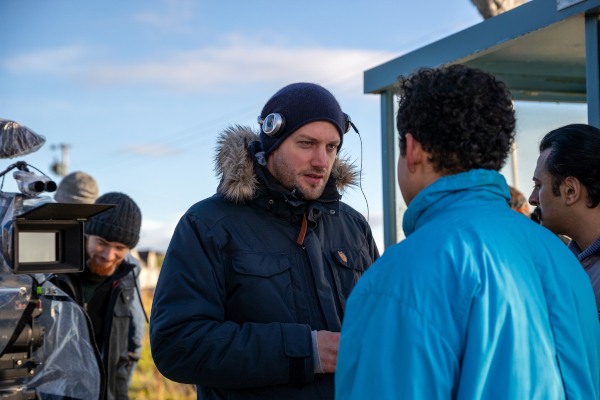
The search was over. I had found Limbo. Shimmering riches in the eye of a rainstorm. We became the first feature film to ever be made there and perhaps we’ll be the last. It wasn’t easy shooting on these islands. In fact, at times it was impossible … most frequently, I simply describe it as a nightmare. We battled against these islands for every single frame of this film, and I think we just about won. Without Uist, our film wouldn’t be what it is. But like everything else “human-made” on Uist, our film now belongs to the islands.
All images courtesy Ben Sharrock, unless otherwise stated. Click on images to see them full size.



